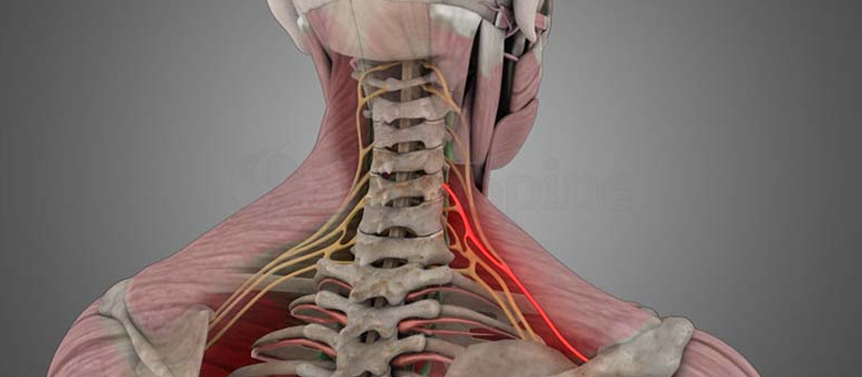Cervical Radiculopathy

Cervical radiculopathy refers to a condition in which the nerves in the cervical spine (neck region) are compressed or irritated, leading to pain, numbness, tingling, or weakness that radiates into the upper extremities (such as the arms, shoulders, and hands). It is commonly caused by a herniated disc or degenerative changes in the cervical spine.
The cervical spine consists of seven vertebrae (C1 to C7) with intervertebral discs between them. The spinal nerves in the cervical region exit the spinal cord through small openings called neural foramina. When these nerves become compressed or irritated, it can result in cervical radiculopathy.
The common causes of cervical radiculopathy include:
- Herniated disc: A herniated or slipped disc occurs when the inner portion of a disc protrudes through its outer ring, pressing on the adjacent nerve roots.
- Degenerative disc disease: With age, the intervertebral discs in the cervical spine can degenerate, causing narrowing of the disc space, osteophyte (bone spur) formation, and potential compression of the nerve roots.
- Cervical spinal stenosis: This condition involves the narrowing of the spinal canal in the cervical spine, which can lead to nerve compression and radiculopathy symptoms.
- Cervical spondylosis: Also known as cervical osteoarthritis, this condition involves the degeneration of the cervical spine, including the discs and facet joints, which can contribute to nerve compression.
The symptoms of cervical radiculopathy can vary but commonly include:
- Pain: Sharp or shooting pain that radiates from the neck into the arm, shoulder, and sometimes the hand.
- Numbness and tingling: Sensations of numbness, tingling, or a "pins and needles" feeling in the affected arm, hand, or fingers.
- Muscle weakness: Weakness in the muscles of the upper extremities, which can affect grip strength or cause difficulty with fine motor skills.
- Loss of reflexes: Reduced or absent reflexes, such as diminished bicep reflex or triceps reflex.
Treatment for cervical radiculopathy depends on the severity of symptoms and the underlying cause. Conservative treatments are typically attempted first and may include:
- Pain management: Nonsteroidal anti-inflammatory drugs (NSAIDs), muscle relaxants, and analgesics can help alleviate pain.
- Physical therapy: Specific exercises and stretches can help improve strength, flexibility, and posture, as well as relieve pressure on the nerves.
- Rest and activity modification: Avoiding activities that worsen symptoms and maintaining good posture can help reduce nerve compression.
- Steroid injections: Corticosteroid injections into the affected area may provide temporary relief by reducing inflammation and swelling around the compressed nerve.
In cases where conservative treatments fail to provide relief or if neurological symptoms are severe or progressive, surgical intervention may be considered. The specific surgical procedure depends on the underlying cause of cervical radiculopathy and may involve removing the source of compression, such as a herniated disc, or widening the spinal canal to relieve pressure on the nerves (e.g., cervical laminectomy, discectomy, or fusion).

